TOP CHARDONNAY WINE
Chardonnay is a green-skinned grape variety used in the production of white wine. The variety originated in the Burgundy wine region of eastern France, but is now grown wherever wine is produced, from England to New Zealand. For new and developing wine regions, growing Chardonnay is seen as a ‘rite of passage’ and an easy entry into the international wine market.
Top Chardonnay wine is the most popular white wine on earth and, more recently, it has also become the most divisive. Travel to any wine region in the world, and you’ll find at least one vineyard growing Chardonnay. It’s a wine that can be simple or regal, aged for many years or consumed immediately.
Chardonnay was born in the Burgundy region of France, where it is known as White Burgundy, and it was there that the wine gained great acclaim for its elegance.
Soon after Chardonnay’s rise in popularity, winemakers in Champagne began to grow the grape as well, using it as the dominant ingredient for their sparkling wines.

Chardonnay Origins
For much of its history, a connection was assumed between Chardonnay and Pinot noir or Pinot blanc. In addition to being found in the same region of France for centuries, it was noted that the leaves of each plant have near-identical shape and structure. Chardonnay’s true origins were further obscured by vineyard owners in Lebanon and Syria, who claimed that the grape’s ancestry could be traced to returning Crusader who introduced the grape to Europe. There has been no solid external evidence supports that theory. Another theory stated that it originated from an ancient indigenous vine found in Cyprus. The Chardonnay grape itself is neutral, with many of the flavors commonly associated with the wine being derived from such influences as terroir and oak. It is vinified in many styles, from the lean, crisply mineral wines of Chablis, France, to New World wines with oak and tropical fruit flavors. In cool climates (such as Chablis and the Carneros AVA of California), Top Chardonnay wine tends to be medium to light body with noticeable acidity and flavors of green plum, apple, and pear. In warmer locations Australia and New Zealand), the flavors become more citrus, peach, and melon, while in very warm locations as California, more fig and tropical fruit notes such as banana and mango come out.
Chardonnay is an important component of many sparkling wines around the world, including Champagne and Franciacorta in Italy.
Modern DNA fingerprinting research has now suggested that Chardonnay is the result of a cross between the Pinot noir and Gouais blanc grape varieties. The Romans are thought to have brought Gouais Blanc from Croatia, and it was widely cultivated by peasants in eastern France. The Pinot of the French aristocracy grew in proximity to the Gouais blanc, resulting in grapes having an opportunity to interbreed. Since the two parents were genetically distant, many of the crosses showed hybrid vigor and were selected for further propagation.
Chardonnay grapes are complicated as they take on very different characteristics when in Champagne than in Burgundy. Winemakers began to realize that the grape could truly embody the region and area where the wine is grown. No two places that grow Chardonnay produces the exact same wine, yet every region finds it is relatively easy to grow.
Chardonnay Growth Conditions
While Chardonnay can adapt to almost all vineyard soils, the three it seems to like most are chalk, clay, and limestone, all very prevalent throughout Chardonnay’s traditional “homeland”. The Grand Cruz of Chablis are planted on hillsides composed of limestone, and chalk. The outlying regions, falling under the more basic “Petit Chablis” appellation, are planted on Portlandian limestone which produces wines with less finesse. Chalk beds are found throughout the Champagne region, and the Côte-d’Or has many areas composed of limestone and clay. In Burgundy, the amount of limestone to which the Chardonnay vines are exposed also seems to have some effect on the resulting wine. In the Meursault region, the premier Cruz vineyards planted at Meursault-Charmes have topsoil almost 79 in above limestone and the resulting wines are very rich and rounded. In the nearby Les Perrieres vineyard, the topsoil is only around 12 in above the limestone and the wine from that region is much more powerful, minerally, and tight, needing longer in the bottle to develop fully. In other areas, soil type can compensate for a lack of ideal climate conditions. In South Africa, for example, regions with stonier, shaley soils and high clay levels tend to produce lower-yielding and more Burgundian-style wine, despite having a discernibly warmer climate than France. In contrast, South African Chardonnay produced from more sandstone-based vineyards tend to be richer and more weighty
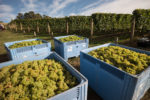
As the grape quickly spread across the world, winemakers discovered that warm climates would produce a Chardonnay grape that was full of tropical flavors, while in cooler climates the grape had flavors of apple as well as earthy fall aromas such as mushrooms and fresh leaves. With the variety of different Chardonnays that can be produced around the world, wine drinkers literally have a Chardonnay for every season and occasion. This worldwide variety allows Chardonnay to go extremely well on its own while sitting outside in the summer, or even on a cold winter’s night with a hearty stew.
Top Chardonnay Wine Food Pairing
Appetizers:
- Hummus with Pita Chip,
- Shrimp Baked with Herbs,
- Seafood Terrine
Cheese:
- Brie
- Fresh Mozzarella
- Ricotta
- Brillat-Savarin
- Fontina
Vegetables:
- Green Peas
- White Beans
- Zucchini
- Edamame
- Butternut Squash
- Carrots
- Yams/Sweet Potatoes
- Corn
- Pumpkin
- Truffles and Mushrooms
- Fruits:
- Apple
- Pear
- Peach
- Mango
- Lemon
Pizza:
- White Pizza with Chicken,
- Mushrooms and Mozzarella,
- Mushroom & Brie Pizza,
- Apple and Brie Pizza.
- Four Cheese White Pizza
Pasta / Polenta / Risotto:
- Lemony Shrimp Risotto
- Wild Mushroom & Herb Pasta
- Spring Vegetable Risotto Fettuccine with Scallops & White Wine
Sauce:
- Pasta Creamy Chicken Sauce
- Butternut Squash Risotto
- Fettuccine Alfredo
- Creamy Pasta Primavera
- Fettuccine with Scallops & Cream Sauce
- Polenta with Beurre Blanc and Scallops
Pork:
Roast Pork with Wine or Lemon
- Pork Chop with Gremolata
- Roast Pork with Cream or Apples
- Pork Chop with Cream and Calvados
- White Sausage (Boudin Blanc)
- Hazelnut-Crusted Pork Chops
Poultry:
- Poached Chicken with Lemon Butter Sauce
- Baked Chicken Breasts with Tarragon
- Baked Chicken with Herbs & Mushrooms
- Roast Chicken with Herbs
- Wine-Braised Chicken with Mashed Potatoes
- Grilled Lemon-Garlic Turkey
- Pecan-Crusted Chicken
- Roast Turkey with Stuffing
- Chicken/Turkey Pot Pie
Soup:
- Vichyssoise
- Creamy Vegetable Soup
- Pureed White Bean Soup Seafood Bisque
- Corn Chowder
- Butternut Squash Soup
Salad:
- Chicken Salad with Grapes
- Poached Salmon Salad
- Tarragon Lobster Salad
- Pecan-Crusted Chicken Salad with Apples and Brie
- Warm Scallop Salad with Mango and Hazelnuts
Sauce:
- Wine Sauce
- Butter Sauce
- Cream Sauce
- Mild Cheese Sauce
Seafood:
- Sole with Butter & Lemon
- Almond-Crusted Trout
- Crab Cakes
- Lobster with Drawn Butter
- Pan-Seared Scallops
- Classic Crab Roll
- Baked/Poached Salmon Cod
- Halibut with Brown Butter
- Lobster/Scallops with Butter & Cream
- Macadamia-Crusted Mahi-Mahi
- Seared Sea Bass on Potato Puree
- Lobster Pot Pie
Please sign up for our email list below to get the latest information on our latest product descriptions, upcoming sales and special offers. We have some of the best offers in the business so please keep updated and have all questions answered in our COMMONWEALTH NEWS
Please chose from our samples of fine Chardonnay below or go to our site for select from all fine wine and spirits.
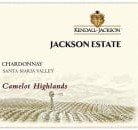 Kendall-Jackson Jackson Estate Camelot Highlands Chardonnay 2016
Kendall-Jackson Jackson Estate Camelot Highlands Chardonnay 2016
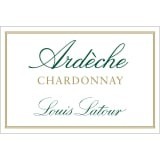 Louis Latour Ardeche Chardonnay 2016
Louis Latour Ardeche Chardonnay 2016
 Benjamin Leroux Meursault 2017
Benjamin Leroux Meursault 2017
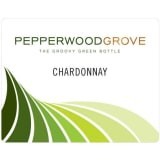 Pepperlwood Grove Chardonnay
Pepperlwood Grove Chardonnay
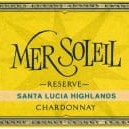 Mer Soleil Santa Lucia Highlands Reserve Chardonnay 2017
Mer Soleil Santa Lucia Highlands Reserve Chardonnay 2017
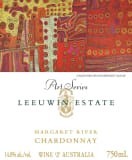 Leeuwin Estate Art Series Chardonnay 2016
Leeuwin Estate Art Series Chardonnay 2016
 Joseph Drouhin St. Veran 2017
Joseph Drouhin St. Veran 2017
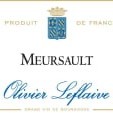
Olivier Leflaive Meursault 2016
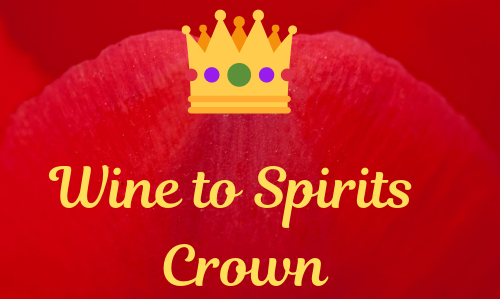
 2007 Alexandre Rochette & cie St. Joseph
2007 Alexandre Rochette & cie St. Joseph 2016 Amon Ra By Ben Glaetzer Barossa Valley Unfiltered Shiaz
2016 Amon Ra By Ben Glaetzer Barossa Valley Unfiltered Shiaz 2007 Andrew Hardy OX Shiraz
2007 Andrew Hardy OX Shiraz Fisher Vineyards Hidden Terrace Vineyard Syrah
Fisher Vineyards Hidden Terrace Vineyard Syrah 2010 Guigal Ermitage Ex Voto
2010 Guigal Ermitage Ex Voto 2012 Haut-Blanville 1955
2012 Haut-Blanville 1955 Jean-Luc Colombo Cornas les Ruchets
Jean-Luc Colombo Cornas les Ruchets 2017 Lancyre Rose
2017 Lancyre Rose 2009 Nicolas Perrin Cornas
2009 Nicolas Perrin Cornas 2004 Planeta Syrah
2004 Planeta Syrah Saracco Moscato d’Asti
Saracco Moscato d’Asti Rivata Moscato d’ Asti
Rivata Moscato d’ Asti Marchese dell’Elsa Moscato d’Asti
Marchese dell’Elsa Moscato d’Asti Mallee Point Moscato
Mallee Point Moscato Castello Poggio Moscato
Castello Poggio Moscato Risata Moscato d’ Asti
Risata Moscato d’ Asti Barefoot Bubbly Pink Moscato
Barefoot Bubbly Pink Moscato Chiarlo Nivole Moscato
Chiarlo Nivole Moscato


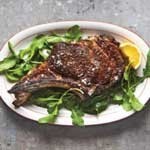
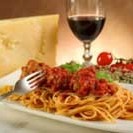
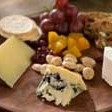
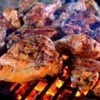
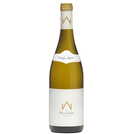
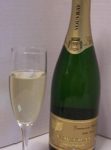
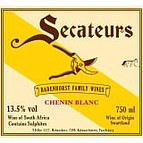
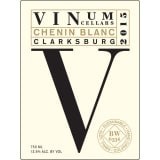 Vinum Cellars Chenin Blanc 2015
Vinum Cellars Chenin Blanc 2015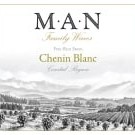 MAN Vintners Chenin Blanc 2018
MAN Vintners Chenin Blanc 2018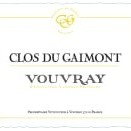 Clos du Gaimont Vouvray 2017
Clos du Gaimont Vouvray 2017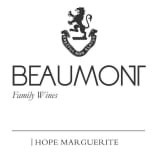 Beaumont Hope Marguerite Chenin Blanc
Beaumont Hope Marguerite Chenin Blanc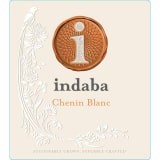 Indaba Chenin Blanc 2017
Indaba Chenin Blanc 2017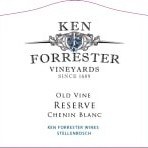 Ken Forrester Petit Chenin Blanc 2018
Ken Forrester Petit Chenin Blanc 2018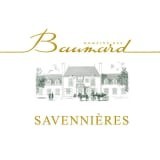 Domaine des Baumard Savennieres 2016
Domaine des Baumard Savennieres 2016 Baron Herzog Chenin Blanc
Baron Herzog Chenin Blanc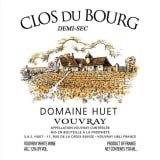 Domaine Huet Vouvray Le Mont Demi-Sec 2018
Domaine Huet Vouvray Le Mont Demi-Sec 2018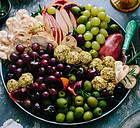
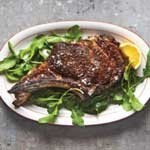
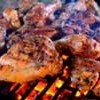
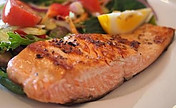
 2015 Vina Cobos Bramare Malbec Lujan de Cuyo
2015 Vina Cobos Bramare Malbec Lujan de Cuyo 2015 Bodega Noemia de Patagonia J Alberto
2015 Bodega Noemia de Patagonia J Alberto 2016 Gen Del Alma Seminare Malbec
2016 Gen Del Alma Seminare Malbec 2006 Dolium Malbec Gran Reserva
2006 Dolium Malbec Gran Reserva 2013 Bodegas Catena Zapata Malbec Adrianna Vineyard Fortuna Terrae
2013 Bodegas Catena Zapata Malbec Adrianna Vineyard Fortuna Terrae 2013 Bodegas Catena Zapata Malbec Adrianna Vineyard Fortuna Terrae
2013 Bodegas Catena Zapata Malbec Adrianna Vineyard Fortuna Terrae